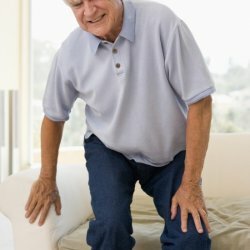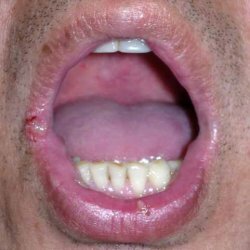Synovitis of the Knee: Symptoms and Treatment
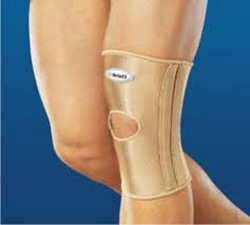
The largest and most mechanically complex compound in the human body is the knee joint.It has the highest load during movement, it performs the function of maintaining the weight of the whole body, and therefore is particularly vulnerable to the development of various diseases and injuries.One of the most common articular pathologies is synovitis.It has a different etiology and delivers a lot of painful sensations.
Table of Contents: Etiology of synovitis Synovitis Symptoms Symptoms of synovitisEtiology( causes) of synovitis
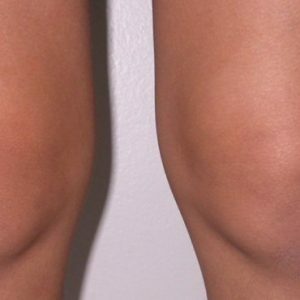 Synovitis is an inflammatory process that occurs in the area of the synovial membrane, a biological material that serves as a kind of cushioning. This membrane synthesizes a special fluid, which protects the joint bones from friction and injury.The total amount of liquid is about 2 mm, which is quite enough for the normal functioning of the organ.
Synovitis is an inflammatory process that occurs in the area of the synovial membrane, a biological material that serves as a kind of cushioning. This membrane synthesizes a special fluid, which protects the joint bones from friction and injury.The total amount of liquid is about 2 mm, which is quite enough for the normal functioning of the organ.
With any damage to the synovial membrane, an inflammatory process occurs that promotes fluid growth.In addition, water, hyaluron and proteins may contain bacteria, pus and erythrocytes.
The pathological process occurs for various reasons, the most frequent ones are:
- Mechanical injury or increased physical exertion.
- Allergic manifestations after consuming exotic foods or medicines.
- Infectious diseases: syphilis, tuberculosis.
- Age changes, provoked by a sedentary lifestyle.
- Rheumatic complications.
- Inflammations of the urinary system, intestinal infections, colds.
- Autoimmune and skin diseases: vasculitis, dermatopolymiosis, diabetes, psoriasis, sarcoidosis of the lungs.
Any of these causes can contribute to complication in the form of knee inflammation.Often this happens against the background of a decrease in immunity and a sedentary lifestyle.
Species of synovitis
In medical practice, synovitis is classified according to the cause that caused the disease.
These types of synovitis of the knee joint are distinguished:
- Primary is a synovitis that is a manifestation of the underlying disease.It can be arthrosis, arthritis, etc.
- Secondary - manifests itself as a reaction to any pathology.As an initial disease, allergies, infectious and viral diseases, ligament or meniscus damage can occur.To eliminate this form of synovitis, it is sufficient to eliminate the root cause of the disease.
- Post-traumatic appearance - the most common synovitis, it occurs due to injury or injury to the knee joint - injury or knee stroke.Such injury triggers the accelerated synthesis of synovial( intraarticular) fluid
Any of these types of synovitis is included in one of two large groups for which the method of inflammation is determined:
- Aseptic - develops without the participation of microorganisms - against the background of endocrine, Autoimmune, rheumatic, post-traumatic diseases.
- Infectious synovitis - it is caused by bacteria, protozoa, fungi, viruses.Often the cause of the infectious form are E. coli, pneumococci, brucella, tubercle bacillus.Pathogenic microflora enters the joint through the bloodstream and forms a hotbed of inflammation.
- Allergic - synovitis, which is a reaction to contact with allergens.
The definition of all these groups and types allows you to designate the most competent treatment that will be effective for a particular type of synovitis.
The course of the disease can be acute, subacute and chronic.
Symptoms of synovitis
Most often the symptoms of synovitis begin to manifest themselves after three days after infection has penetrated the joint or traumatized area.
Strong signs of pathology are:
- pain of a pulling nature;
- increase and change of the usual form of the joint;
- traffic obstruction;
- Hyperemia( redness) of the skin.
The severity of these manifestations depends on a number of factors.Very often the disease is complicated by general malaise, fever, disruption of other organs.
Symptoms of acute synovitis of the knee
Time of development of the acute form of pathology - from several hours to several days.
If the inflammation is of an infectious nature, then with an acute synovitis, the doctor marks such symptoms:
- The area of the joint significantly increases in volume.
- The swelling is red, it feels hot.
- Flexing-unbending leg is painful, walking is accompanied by lameness.
- General condition of the body: weakness, muscle pains, slight nausea due to intoxication, body temperature - 38 degrees and above.
Signs of pathology are growing rapidly, joint swelling and deterioration of well-being, usually develop within a few hours.
Note: gives the most discomfort and soreness a purulent infection, indicating a rapidly developing disease.
For the acute form of purulent synovitis of the knee joint is characterized by:
-
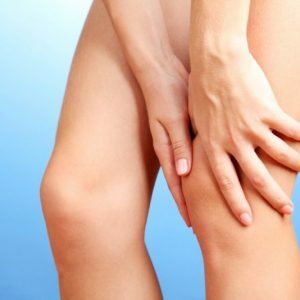 quite strong pain, having a bursting or pulsing character;
quite strong pain, having a bursting or pulsing character; - marked swelling of the joint;
- strong soreness when trying to bend / unbend the leg;
- reddening or blueing of the skin over the articulation, the appearance of a characteristic luster on it;
- temperature increase in the area of the inflammation focus;
- expressed common signs of intoxication( significant increase in body temperature, chills, severe malaise and weakness, sometimes - nonsense);
- necrotic processes in the ligaments and synovial knee pouch.
The symptoms of the pathology with the traumatic form of the synovitis of the knee joint can also develop rapidly.In this case, on the foreground there is an increasing swelling, tenderness in palpation, restriction of movement in the knee.The patient complains of a general malaise, he has an insignificant increase in temperature and an acceleration of the reaction of erythrocyte sedimentation.
The course of of noninfectious synovitis is more extended in time, the development of the disease takes from several days to several weeks.Initially, a person feels a slight soreness that occurs when the damaged joint is loaded.As a rule, at the initial stage, this soreness is at rest.Slowly, but surely, there is swelling, joint deformity and pain syndrome.
In the presence of such symptoms, it is necessary not to postpone a trip to the therapist, who, based on an anamnesis, will send a consultation to a rheumatologist, surgeon or orthopedic trauma specialist.
Symptoms of chronic synovitis
Chronic synovitis of the knee joint is very rare, it is the result of an incompleteness of the acute form of pathology and is characterized by blunted symptoms. Painful manifestations are of little concern to the patient.The knee has a small puffiness, redness is absent, there is a slight soreness in bending and walking.
The chronic form of synovitis can be recognized by the following features:
- The joint often crunches, regular micro-dislocations are observed.
- Long walks are not possible, as there is an increased fatigue of the legs.
- The joint has limited mobility.
In chronic form, there are no symptoms such as fever or fever.The inflammation can lead to untreated rheumatism, allergic reactions, gout.
Each year, the accumulation of effusions within the knee joint gradually accelerates the development of the inflammatory process.The patient has signs of hydratrosis( dropsy) and there are pathological changes in the ligamentous apparatus.
Diagnosis of synovitis
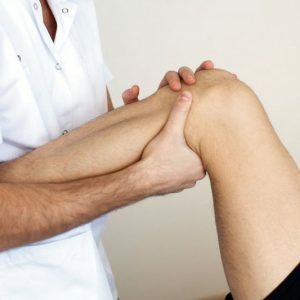 The diagnosis involves a certain algorithm of the specialist's behavior.Initially, a visual inspection is performed, which determines the degree of swelling, deformity, soreness and the level of mobility restriction.The patient's medical record includes information on the causes of inflammation, the state of the organism and the diseases and infections that have been transferred.
The diagnosis involves a certain algorithm of the specialist's behavior.Initially, a visual inspection is performed, which determines the degree of swelling, deformity, soreness and the level of mobility restriction.The patient's medical record includes information on the causes of inflammation, the state of the organism and the diseases and infections that have been transferred.
The specialist further assigns a laboratory test, including the transfer of a biochemical blood test from a vein, a general urine test, an immunological examination, and the extraction of synovial fluid from the inflamed knee.
Important ! For more accurate diagnosis, ultrasound examination of the knee, x-ray, arthroscopy can be prescribed.
General principles of treatment of synovitis
Treatment of the knee joint is prescribed after a complete examination and diagnosis. The method of therapy depends on the type of inflammation, the stage of development of synovitis of the knee joint and the individual characteristics of the organism.
An integrated approach is most commonly used, implying:
- puncture;
- immobilization of the damaged joint;
- taking medications;
- physiotherapy;
- use of traditional medicine.
If conservative methods of treatment of synovitis of the knee joint fail to produce the proper result, surgical intervention is used.
Joint puncture
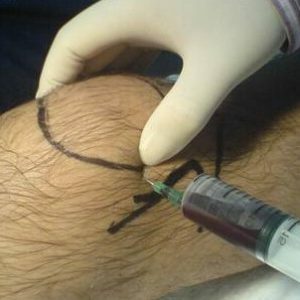 Puncture performs both therapeutic and diagnostic value.First, with its help it is possible to determine the type and cause of the pathological process.Secondly, with the help of a puncture it is possible to extract excess synovial fluid from the cavity and thereby "unload" the joint, relieve pain and restore mobility.
Puncture performs both therapeutic and diagnostic value.First, with its help it is possible to determine the type and cause of the pathological process.Secondly, with the help of a puncture it is possible to extract excess synovial fluid from the cavity and thereby "unload" the joint, relieve pain and restore mobility.
For the procedure, the surgeon prepares a syringe with a special thin and long needle and antibiotic solution.Removal of exudate, as a rule, is carried out without anesthesia.Manipulation requires a certain experience, becauseThe doctor is important to get inside the joint bag.After the selection of the liquid, the intra-articular introduction of the antibiotic is carried out.
Immobilization
The first thing that the attending physician recommends after puncture is a significant restriction of the load on the joint.In this case, complete rest is rarely needed, so you can use the knee brace or the immobilizing bandage to treat synovitis.
In exceptional cases, gypsum boards or a tire may be applied.The maximum immobilization time is 7 days.
Medication for synovitis of the knee joint
The main task of drug therapy is to eliminate signs of inflammation, prevent complications and reduce the likelihood of recurrence of the disease.
For the treatment of synovitis of the knee joint, these medications are prescribed:
- Non-steroidal anti-inflammatory drugs - they relieve inflammation and relieve painful sensations.For the treatment of edematous surface, gels and ointments Diclofenac, Indomethacin or Voltaren are recommended.Their effect is enhanced by the appointment of tableted and injectable NSAIDs.
- Inhibitors capable of reducing the activity of proteolytic enzymes - Trasilol and Gordoks.They are prescribed for prolonged and chronic form of the disease.
- Corticosteroids.If the inflammation is triggered and has a severe form of manifestation, Dexamethasone or Kenalog-40 for administration to the joint may be prescribed.
- Antibiotics, topical in the treatment of infectious synovitis of the knee joint.They are recommended to be used together with probiotics necessary to maintain the gastrointestinal microflora.
- ATP, vitamins, nicotinic acid, helping to normalize the processes of microcirculation of the fluid.
Physiotherapy with synovitis
Approximately from the third day of the development of the disease, the patient is prescribed a course of physiotherapy.
Using this exposure technique, it is possible to achieve the following objectives:
- Eliminate pain.
- Restore the mobility of the joint.
- Strengthen lymphatic drainage of tissues.
- Improve circulation of the inflamed area.
In this case,
- CMT( sinusoidal-modulated current therapy) can be used.CMT - therapy, which is prescribed for acute pain, at the very beginning of the disease.When SM-currents are affected, loss of sensitivity of pain receptors occurs.There is a rush of blood, articular cartilage begins to recover.Thermal treatment is carried out only at the first stage of the disease.
- Magnetotherapy - impact on the affected area by the method of low-frequency pulses.It is prescribed only to elderly patients, with a chronic synovitis.With the help of the procedure it is possible to improve joint mobility, relieve pain, contribute to the restoration of damaged tissues and cartilage.
- Electrophoresis is the most effective method of treatment, which by means of electric pulses delivers the medicine directly to the joint.With the rapid delivery of medicament to the inflamed area, it is possible to achieve maximum results: puffiness comes off, the joint becomes more mobile, pain is eliminated, recovery is much faster.
Traditional medicine for the treatment of synovitis of the knee
For the acceleration of treatment and removal of symptoms of synovitis, traditional medicine can be successfully used.
Please note! Traditional methods of therapy are used only in conjunction with traditional treatment and only in consultation with a doctor!
The most effective means are:
- Salty ice prepared from 4 tbsp.L.Salt and 1 liter of water.Obtained pieces of ice are applied to the inflamed joint before rusting, while water is not wiped.After all, the diseased knee is wrapped for 3-4 hours with a woolen shawl.
- Decoction of bay leaf.It is made from 300 ml.Water and 10 laurel leaves, which boil for 5 minutes, and then insist - 3 hours.Drink before going to bed for three days, then do 7 days break and again drink 3 days.The course is repeated a year later.Prepared broth can not be consumed on the second day.From it you can also make baths and wipes.
- Comfrey.From a glass of the crushed plant and 200 gr.Pork fat is prepared with an ointment, for which the ingredients are twisted in a meat grinder and insist a week in a cool place.Ointment rubs sore spots.Also, in the treatment of synovitis of the knee joint, it is possible to prepare a tincture for rubbing.For her take 500 ml.Vodka and it insists 150 gr.Crushed comfrey roots.
Operative intervention
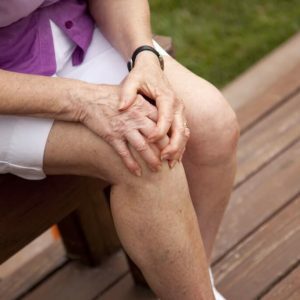 Surgical treatment of synovitis is an extreme measure, it is resorted to only in cases when the disease takes a neglected form, and the traditional methods do not give any result to .At an operative intervention on the damaged joint - sinovectomy - carry out removal of meniscuses, foreign bodies, the destroyed sites of a synovium.
Surgical treatment of synovitis is an extreme measure, it is resorted to only in cases when the disease takes a neglected form, and the traditional methods do not give any result to .At an operative intervention on the damaged joint - sinovectomy - carry out removal of meniscuses, foreign bodies, the destroyed sites of a synovium.
The postoperative period implies complete rest, reception of various drugs, joint development, physiotherapy courses.
Prevention of synovitis of the knee
Any disease is much easier to prevent than to later experience pain, discomfort and long-term treatment.Prevention of inflammation of the knee joint is the timely access to the doctor, and the treatment at the initial stage of the disease.
To reduce the risk of joint damage, the following measures will help:
- Every injury and injury must be treated by a specialist without complications.
- With existing chronic and infectious diseases, you should listen to the body and consult a doctor at the first alarms.
- Try to wear comfortable shoes, and with physical exertion - fix the joints with knee pads.
To prevent the disease is not difficult, it is important to adhere to certain rules, and promptly contact a specialist.Discovered at an early stage synovitis, it is easy to treat, and brings the least discomfort.If the patient does not hurry to undergo a consultation with a doctor and is engaged in self-medication, it is likely that the disease will take on a severe form, provoke a number of formidable complications or even become a life threat, as sepsis develops against a background of purulent inflammation.
Chumachenko Olga, medical reviewer

